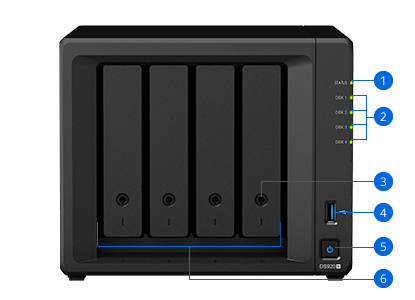

Now that Backblaze B2 is configured, launch DSM and open Hyper Backup. Without this setting, Hyper Backup will be unable to find your bucket.Ħ. Also, ensure that “Allow listing all bucket names including bucket creation dates” is checked off. Make sure that you note down the KeyID and Application Key as we will need this information for Hyper Backup. This is what will ensure that Hyper Backup can connect to the bucket using these credentials. If you need to, create a new Application Key that has permission to your new bucket and ensure that it has an Amazon S3 Endpoint. The next step is to ensure that you have an Application Key that is compatible with the Amazon S3 API.ĥ. If it doesn’t exist, you will need to create a new bucket that will automatically add an endpoint.Ĥ. To see if your existing bucket is, check to see if an “Endpoint” exists.ģ. It’s important to know that older buckets are not compatible with the new Amazon S3 API endpoint. If you have used Backblaze B2 in the past, you will know that all data is stored in a bucket and you can configure credentials for that bucket.
#SYNOLOGY DEDUPLICATOR HOW TO#
How to Backup a Synology NAS to Backblaze B2Ģ. Conclusion – How to Backup a Synology NAS to Backblaze B2.How to Backup a Synology NAS to Backblaze B2.


There is another point of view: Docker + Duperemove And this is the answer for all NAS under 8GB of RAM. you can use this knowledge base for BTRFS and Dedupe - linkīut think about, that block-level Dedupe needs "large amounts of RAM to store the lookup table of known block hashes".to be sure - block level Dedupe is not “free of charge” sw anywhere (except some Docker ver).of course, till now no Synology internal or integrated by Synology “byte or block level” Dedupe solution is known.
#SYNOLOGY DEDUPLICATOR FREE#
If you think about it it is quite complex.īut I'm not ITprofessional, just a power user and I'm sure that real IT managers have a way how to understand what to free on the storage if they run out of the space. I think I even asked Synology but they have no tool and no idea how to learn the real space distribution. Folders with size of many GB can occupy on the HDD just a few MB. Now it is nearly impossible to know what file to delete to free some space.
#SYNOLOGY DEDUPLICATOR SOFTWARE#
Combined on the file system (btrfs) and on the backup software level. On my storage of 7 TB I use cca 3-4 TB, but If I count the disc/folder space I see that the data stored have more them 50TB (maybe much more, I did not count it). And for this task such third party software (as WinDirStat, StorageAnalyzer or FolderSizes) does not help much. The biggest, and maybe oldest File/archive etc. Maybe this way: In case I run out of storage space, I need to know what files to delete to empty some space. In fact it is quite diffucult because I do not know how to describe it. I'll try to describe what I'm looking for. Anyway - that is not what I'm asking for. The best software for this task I have ever seen. It is free but it seem to give you better graphical overview about the folder/disc space. I do not know FolderSizes but I use WinDirStat (for Win, improved Linux version) or the original one on Linux. Thanks for the answer and sorry that I did not express my need in details.


 0 kommentar(er)
0 kommentar(er)
